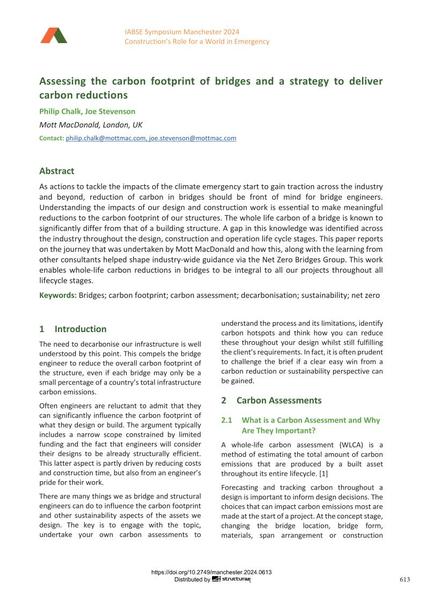Assessing the carbon footprint of bridges and a strategy to deliver carbon reductions

|
|
|||||||||||
Détails bibliographiques
| Auteur(s): |
Philip Chalk
(Mott MacDonald, London, UK)
Joe Stevenson (Mott MacDonald, London, UK) |
||||
|---|---|---|---|---|---|
| Médium: | papier de conférence | ||||
| Langue(s): | anglais | ||||
| Conférence: | IABSE Symposium: Construction’s Role for a World in Emergency, Manchester, United Kingdom, 10-14 April 2024 | ||||
| Publié dans: | IABSE Symposium Manchester 2024 | ||||
|
|||||
| Page(s): | 613-621 | ||||
| Nombre total de pages (du PDF): | 9 | ||||
| DOI: | 10.2749/manchester.2024.0613 | ||||
| Abstrait: |
As actions to tackle the impacts of the climate emergency start to gain traction across the industry and beyond, reduction of carbon in bridges should be front of mind for bridge engineers. Understanding the impacts of our design and construction work is essential to make meaningful reductions to the carbon footprint of our structures. The whole life carbon of a bridge is known to significantly differ from that of a building structure. A gap in this knowledge was identified across the industry throughout the design, construction and operation life cycle stages. This paper reports on the journey that was undertaken by Mott MacDonald and how this, along with the learning from other consultants helped shape industry-wide guidance via the Net Zero Bridges Group. This work enables whole-life carbon reductions in bridges to be integral to all our projects throughout all lifecycle stages. |
||||
| Mots-clé: |
ponts durabilité
|
||||
